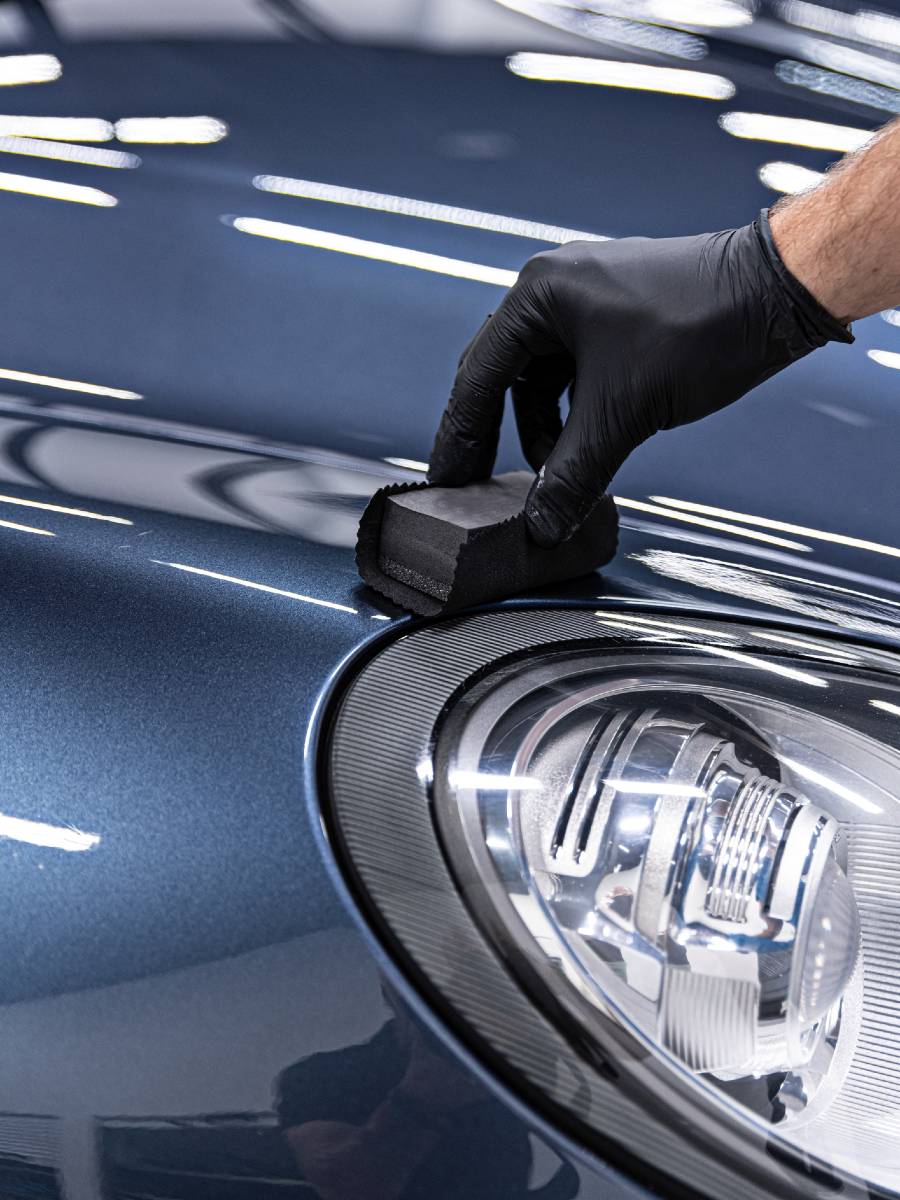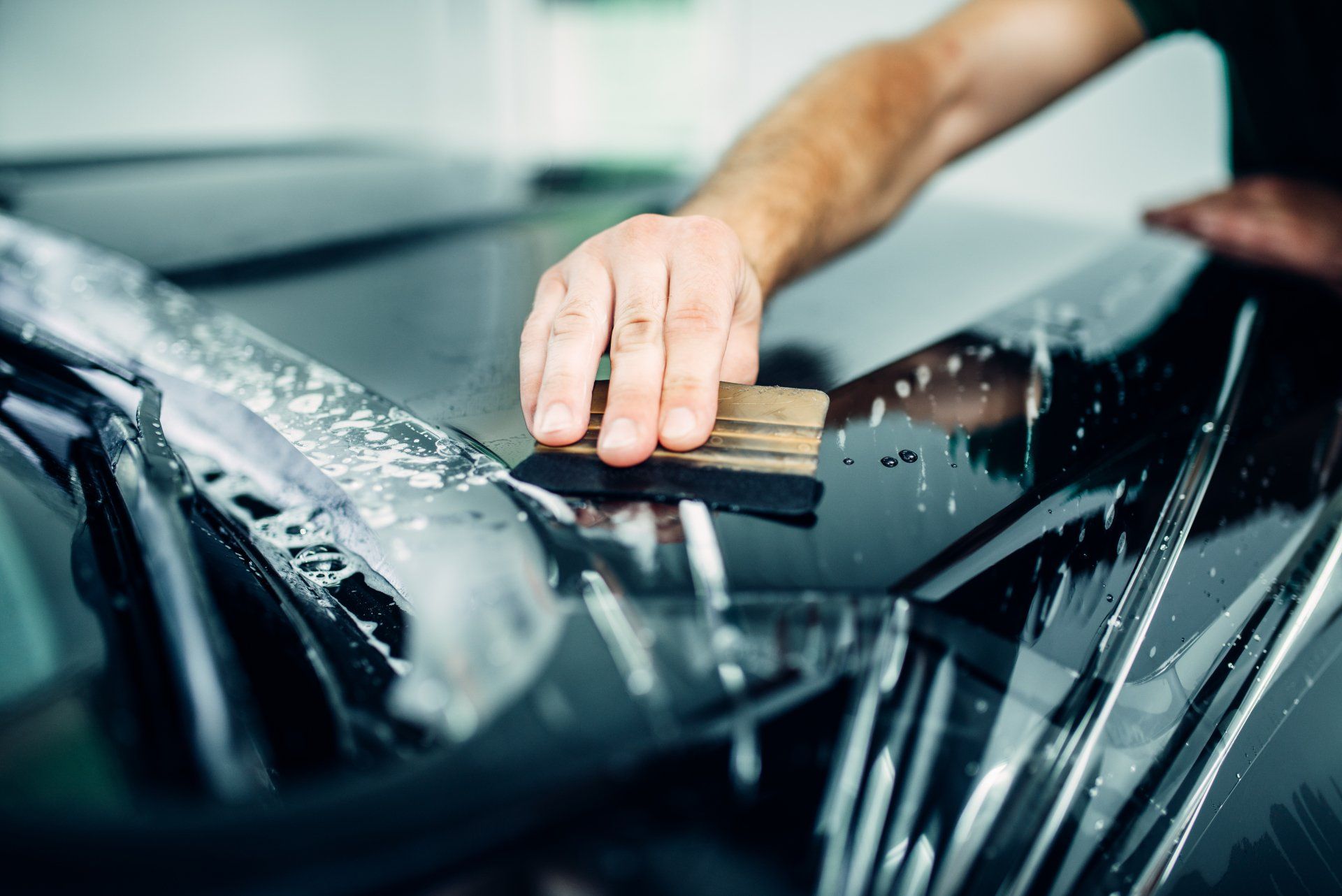Ceramic Coating for Cars: The Ultimate Solution for a Glossy Finish
Ceramic Coating for Cars: The Ultimate Solution for a Glossy Finish
Blog Article
Ceramic Finish vs. Traditional Wax: Which Supplies Better Long-Term Defense?
The dispute in between ceramic coatings and standard wax for automobile security has garnered significant attention amongst automotive enthusiasts and specialists alike. While both serve the objective of guarding paint, their distinctions in toughness, application, and long-lasting maintenance costs might affect a consumer's choice. Ceramic coverings flaunt remarkable durability and resistance to ecological variables, yet the intricacy of their application elevates questions about availability and functionality. As we explore these contrasting alternatives, it comes to be important to take into consideration not only the instant advantages however also the ramifications for automobile treatment gradually.
Summary of Ceramic Layer
Ceramic coating has actually gained significant popularity amongst vehicle enthusiasts and detailers alike as a result of its advanced safety qualities. This cutting-edge technology is created to create a resilient, hydrophobic guard over a car's paint surface area, significantly enhancing its resistance to ecological impurities such as dust, UV rays, and chemical discolorations. Unlike traditional wax, which offers a short-lived layer of protection, ceramic finishes bond at a molecular level with the paint, providing lasting sturdiness-- often extending beyond 2 years with correct upkeep.
The application procedure includes meticulous prep work of the car's surface area, consisting of cleansing and polishing to make certain ideal adhesion. Once used, the layer remedies to create a durable layer that not just includes deepness and gloss to the paint but also simplifies upkeep. With its hydrophobic residential properties, ceramic finish allows water and dirt to slide off even more conveniently, lowering the regularity of laundries and lessening the threat of swirl marks.
In addition, ceramic layers are offered in numerous formulas, allowing customers to pick items tailored to their details requirements and choices. On the whole, ceramic layer stands for a considerable development in paint defense innovation, providing superior performance contrasted to standard options.
Summary of Traditional Wax
Typically considered as a staple in auto treatment, wax works as a popular selection for those seeking a simple approach to improve and protect their automobile's paint - ceramic coating. Automotive wax usually comprises natural active ingredients, such as carnauba, or artificial compounds, made to develop a protective layer on the surface of the paint. This layer not only improves the lorry's gloss and beam but also gives an obstacle versus ecological contaminants
The application of wax is typically straightforward, making it obtainable for both professionals and do it yourself fanatics. It can be used by hand or device, permitting adaptability in the outlining procedure. As soon as used, wax requires a treating duration, after which it solidifies to develop a protective shell. Wax is additionally recognized for its ability to drive away water, advertising a beading result that helps in the avoidance of water areas and deterioration.
Nevertheless, while wax works for improving the aesthetic allure of an automobile, it is essential to note that the defense it uses might necessitate extra constant reapplication compared to alternative products, such as ceramic finishings. In general, traditional wax remains a popular choice for those prioritizing ease of use and prompt visual improvement.
Sturdiness and Longevity Contrast
While both ceramic coatings and typical wax deal protective advantages for automotive paint, their sturdiness and longevity vary significantly. Conventional wax, normally made from natural carnauba or synthetic polymers, generally provides a protective layer that lasts about three to six months. This fairly brief lifespan demands routine reapplication to preserve ideal defense.
In comparison, ceramic finishes are crafted from innovative nanotechnology, developing a covalent bond with the paint surface area. This causes a robust, hydrophobic layer that can endure for 2 to 5 years, relying on the product and ecological problems. The recommended you read premium resilience of check my site ceramic coatings is credited to their chemical framework, which supplies enhanced resistance to scratches, UV rays, and oxidation.

Defense Versus Ecological Aspects
Safeguarding an automobile's paint from ecological aspects is important for keeping its look and value gradually. Vehicles are continuously revealed to a variety of components, consisting of UV rays, bird droppings, tree sap, acid rain, and roadway crud, every one of which can endanger the integrity of the paintwork.
Ceramic coatings supply a durable protection versus these environmental assailants. Unlike typical wax, which can deteriorate promptly under UV exposure, ceramic layers develop a durable, hydrophobic layer that resists the dangerous effects of sunshine and environmental pollutants. This sophisticated innovation develops a chemical bond with the lorry's surface area, supplying remarkable defense that lasts for several years, even in rough conditions.
In contrast, ceramic coatings maintain their protective top qualities longer, significantly reducing the danger of paint damage and guaranteeing that the vehicle preserves its aesthetic appeal. As an outcome, ceramic layers are progressively identified as the premium option for lasting defense versus environmental aspects.
Application and Upkeep Differences
The approaches of application and subsequent maintenance for ceramic finishes and traditional wax vary dramatically, impacting the general user experience and effectiveness of each product. Ceramic finishings need a more complex application procedure, typically entailing surface preparation that includes washing, decontaminating, and polishing the car. When the surface area is prepared, the ceramic layer is used in his comment is here a regulated setting, often needing professional experience to make certain proper curing and bonding to the paint.

While both items enhance car appearance, the longer-lasting protection offered by ceramic coverings may validate their initial investment, despite the even more requiring application process. On the other hand, conventional wax continues to be a popular option for those seeking a simpler, albeit short-term, option.

Conclusion
To conclude, ceramic layers show considerable advantages over standard wax in regards to durability and environmental defense. With a life-span extending two to five years and exceptional resistance to UV rays, dirt, and chemical spots, ceramic layers supply a much more efficient remedy for lasting automobile maintenance. Although the application process may call for professional competence, the resulting expense savings and reduced regularity of reapplication highlight the worth of ceramic layers for those looking for ideal car protection.
The discussion between ceramic coatings and standard wax for vehicle security has amassed significant focus amongst vehicle enthusiasts and specialists alike. Unlike traditional wax, which provides a temporary layer of security, ceramic coatings bond at a molecular degree with the paint, offering durable longevity-- typically expanding beyond 2 years with proper maintenance.
While both ceramic finishes and conventional wax deal protective benefits for auto paint, their resilience and long life differ dramatically. For automobile lovers looking for long-lasting protection, ceramic finishings provide an engaging benefit over standard wax products.
In verdict, ceramic coatings demonstrate considerable benefits over traditional wax in terms of sturdiness and environmental protection.
Report this page